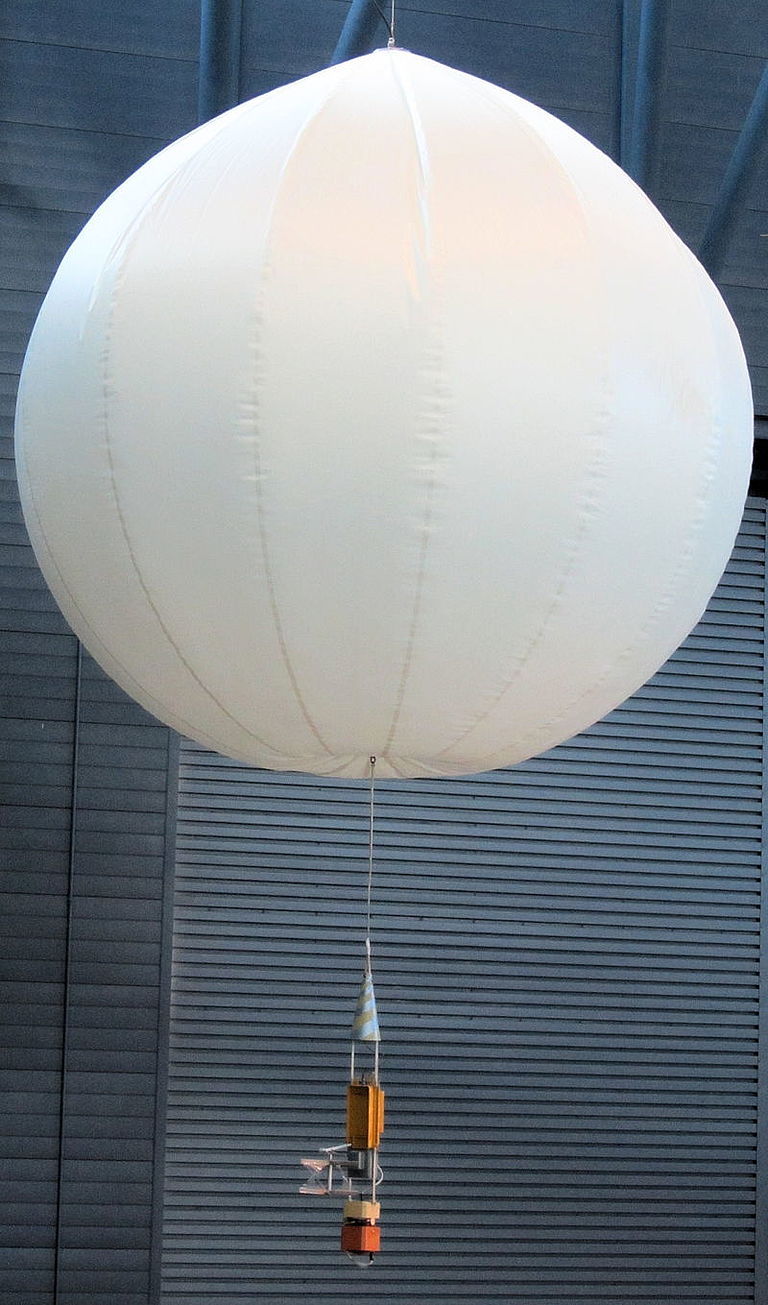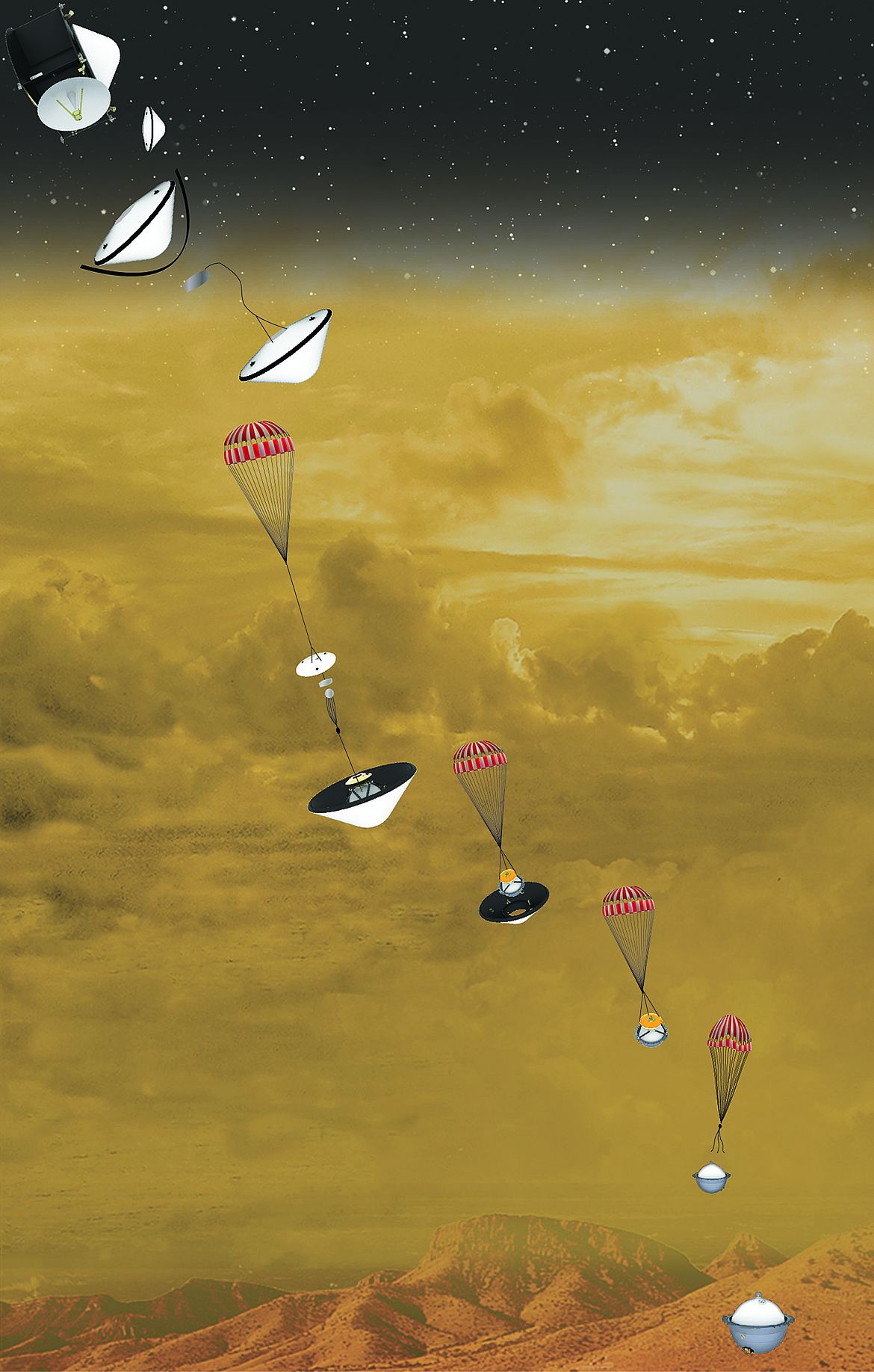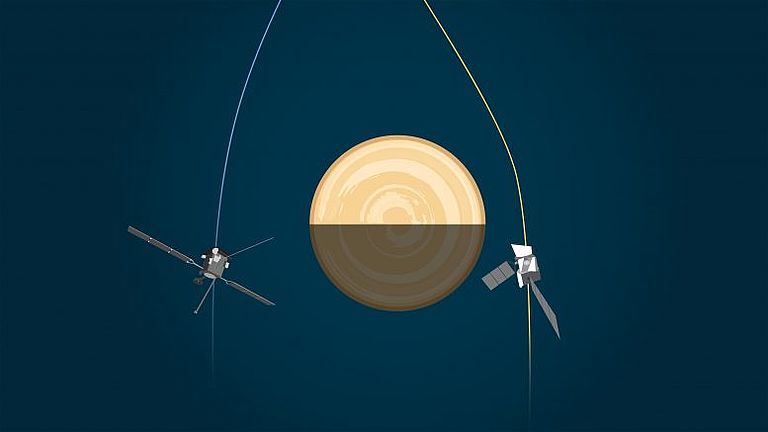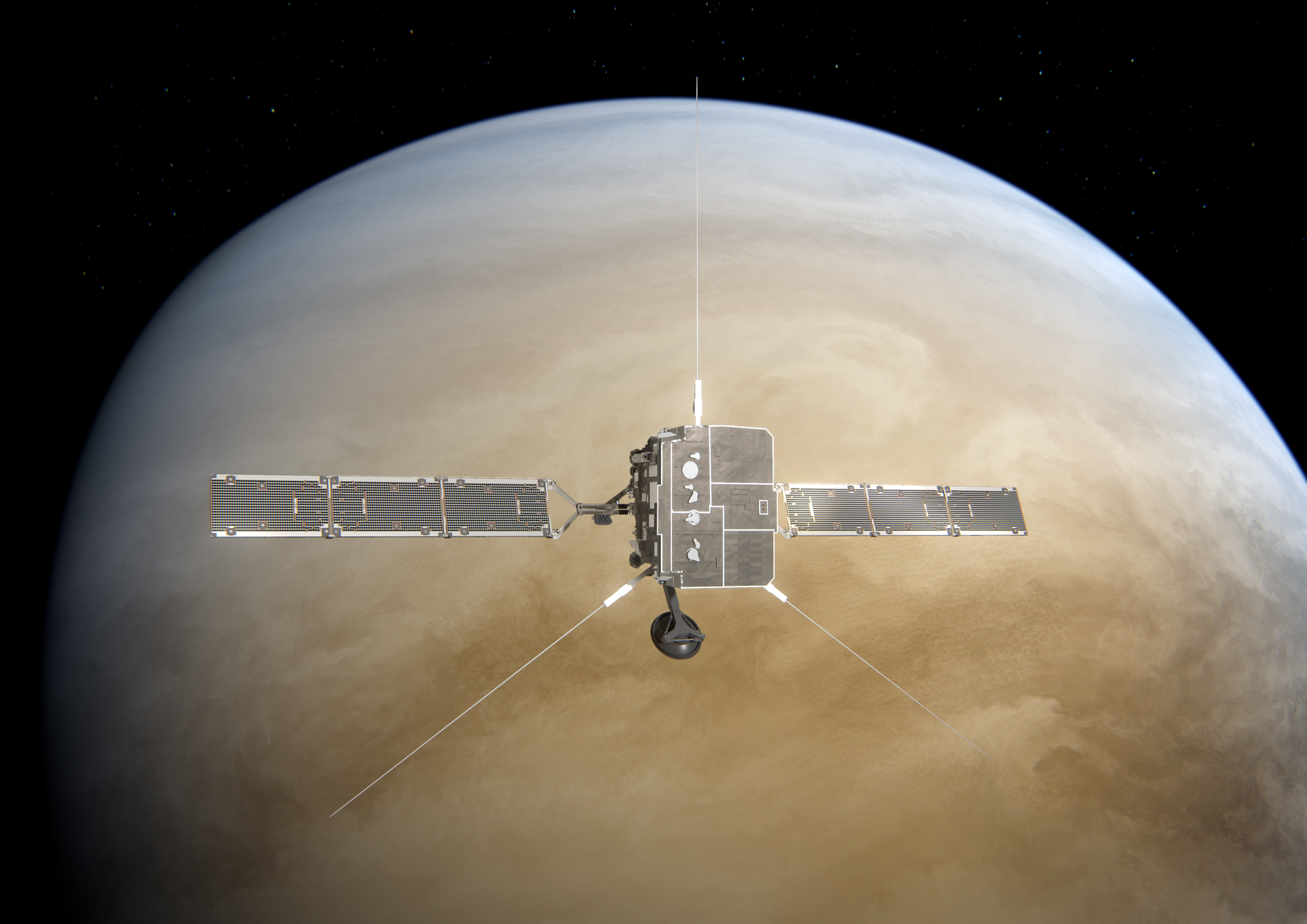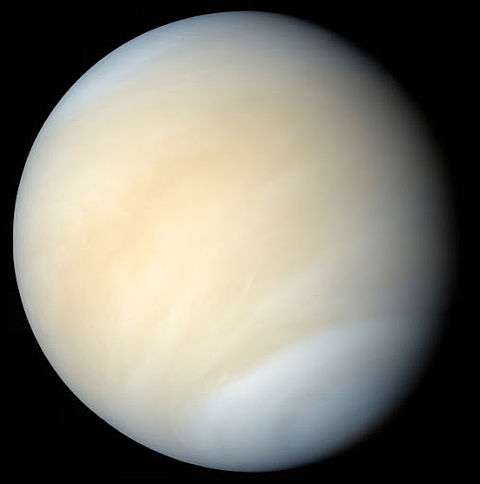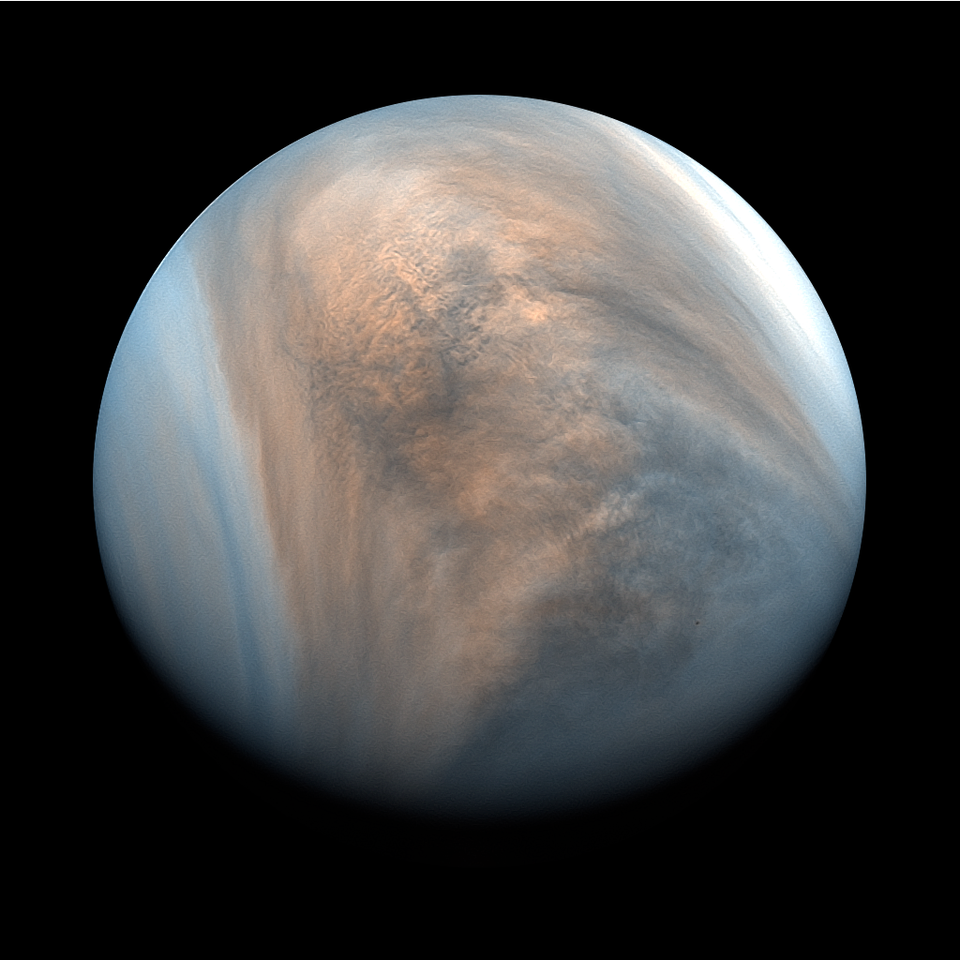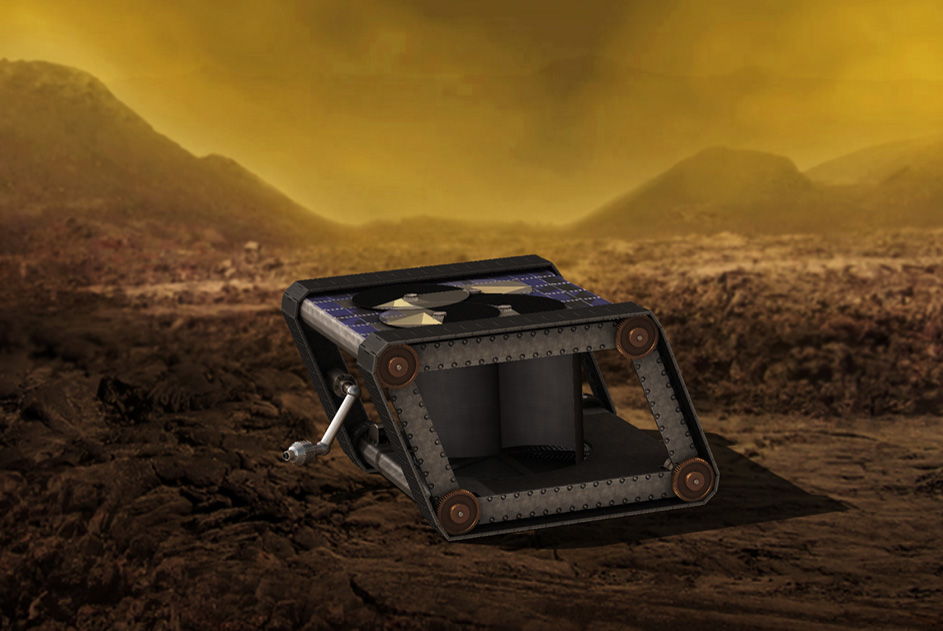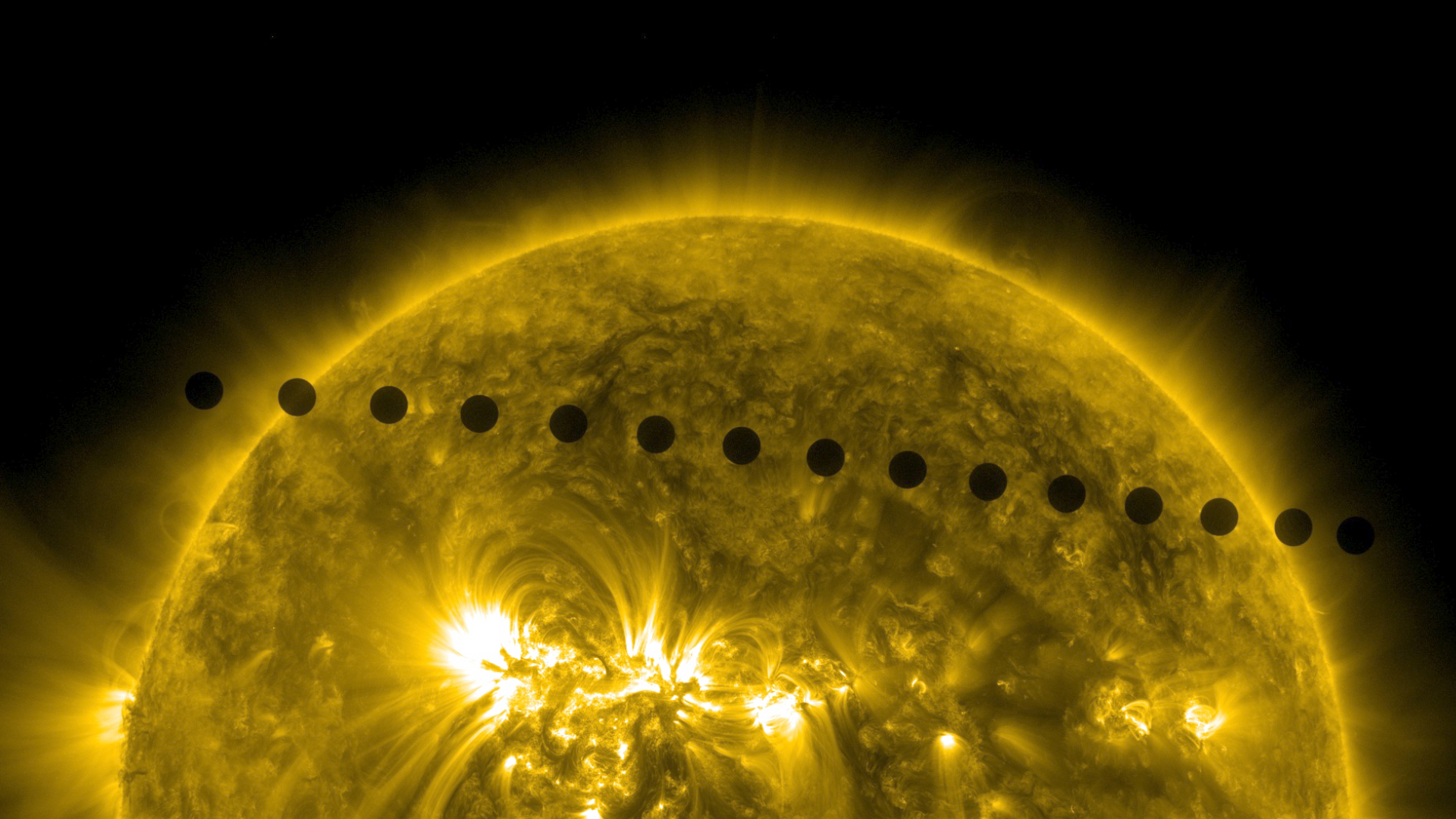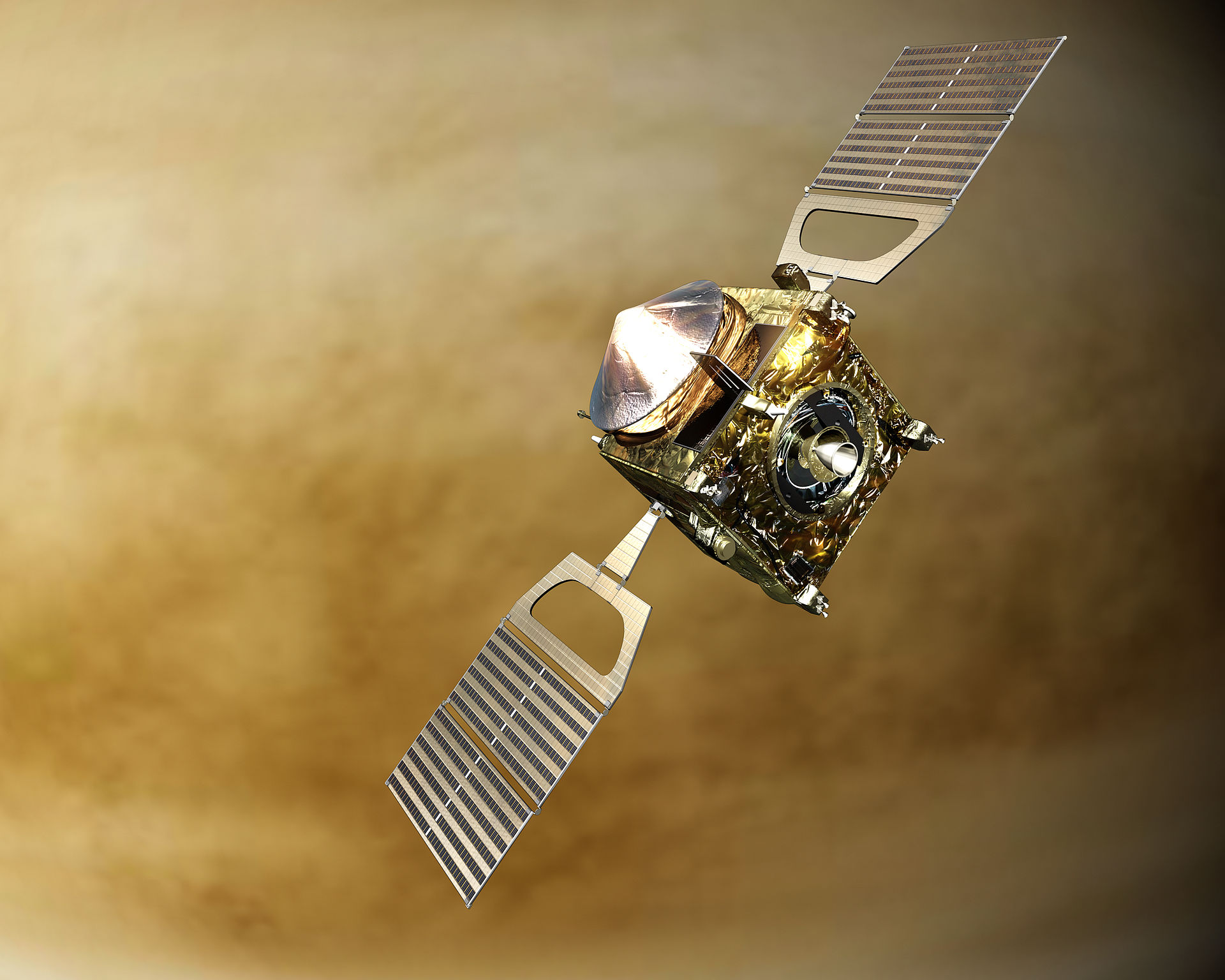Venus Express, the last European mission to Venus to date, left the Earth on November 9, 2005. The probe entered into an orbit around Venus on April 11, 2006, studying the planet’s atmosphere until the end of November 2014. The scientific instruments used for this purpose were largely adopted from the Mars Express and Rosetta missions, thus allowing the probe to be built within a few years at comparatively little financial expense. Dr. Rolf Janovsky, head of pre-development at OHB and an expert in space systems studies, would adopt a similar approach for the design of the next Venus mission out of time and budget considerations.
Dr. Janovsky, what form could the next mission to Venus take?
That depends entirely on the scientific purpose of the mission. For some studies, taking measures from an orbit around the planet would be perfectly adequate, while for others data would need to be collected in the planet’s atmosphere or on its surface. Different scenarios are fundamentally possible.
To date, there has been only one European mission with Venus as its primary destination. What is the reason for this?
This is due to the conditions prevailing on Venus. Temperatures of 460 °C and atmospheric pressure equaling that found in the depths of the Earth’s oceans are the conditions that landing systems bound for Venus would have to contend with. And the atmosphere is not easy either. The clouds consist mainly of corrosive sulfuric acid and there are large temperature differences that must be taken into account when designing entry probes. In short, exploration of Venus is technically very challenging.
What is the greater challenge, the pressure or the heat?
Definitely the heat. On the basis of our current technological capabilities, it would be quite possible to engineer a probe able to withstand the pressure on Venus. On the Earth, people have already reached depths of almost 11,000 meters with special submarines. At this depth, the pressure is over 1,000 bar, far more than on the surface of Venus. So, the pressure is not the main problem. Addressing the heat issues would be far more difficult. Active cooling methods are extremely demanding – both financially and in terms of energy requirements. In some cases, the technology is not even available today. Capacitive heat accumulators would be another way of overcoming the heat. These would slow the rate at which the landing probe heats up, thus extending its life. But this would not be indefinite, either. Once the heat storage tanks are full, the temperature of the equipment inevitably rises. Depending on the capacity of the heat accumulators, this would cause the system to fail within a matter of hours or, at most, days.
So, does this mean that on the basis of the technology currently available to us it would be impossible to take measurements on the surface of Venus?
No, it wouldn’t be impossible. In the past, probes have landed on the surface and have also carried out measurements. However, the fact of the matter is that we will only be able to use short-life surface probes, at least in the near future. And using a stationary probe to take measurements has an additional disadvantage in that that samples can only be taken and data collected at a single location. If we find that a sample has a certain composition at a landing site, what does that mean? Only that the soil in this specific place has precisely this composition. And if we don’t find life at the landing site, does that mean that there is no life at all anywhere else on Venus or just that we have been looking in the wrong place? To obtain truly meaningful results, we would have to deploy a whole network of landing probes or place a mobile exploration system on the surface of Venus – something that would call for enormous financial and technical resources.
If we find that a sample has a certain composition at a landing site, what does that mean? Only that the soil in this specific place has precisely this composition.
And what about taking measurements in the atmosphere?
Compared to the conditions on the surface, the atmosphere is far more hospitable. On Venus, the cloud layer begins at an altitude of about 50 kilometers, where temperatures are a relatively mild 60 °C. And atmospheric pressure is much lower at this altitude, too. This would make it easier to develop technical systems that remain functional over protracted periods of time and are able to perform extensive measurements. And this is also where the spectral signatures that indicate the existence of life have been found.
What could systems for exploring Venus’ atmosphere look like?
In the past, ideas of using balloons or airships to investigate the atmosphere of Venus have been floated. This is fundamentally not a bad idea given that the high density of the atmosphere would make it easier to generate sufficient static lift. Balloons have already been used, but they have the disadvantage of not being able to move actively and are therefore not controllable. A balloon follows the currents in the atmosphere. In the worst case the balloon would get caught in a circulatory flow and only move on a circular path. In addition, balloons inevitably lose carrying gas and sooner or later sink to the surface.
Are there other ideas apart from balloons?
Yes, indeed. For example, a combination of an orbiter and multiple atmosphere probes. I prefer this option. The laws of aerodynamics as we know them on the Earth can also be applied to the design of aircraft for Venus’ atmosphere. And the high pressure, which is a problem on the surface, would actually come in handy here: In the dense atmosphere, aircraft with wings and propellers would be particularly efficient. Another factor in favor of using an aircraft is the lower gravitational acceleration compared to the Earth, which reduces the necessary lift. Depending on the flight speed of the probe, a wing area of approximately two to five square meters would be sufficient to support a weight of 25 kilograms.
The laws of aerodynamics as we know them on the Earth can also be applied to the design of aircraft for Venus’ atmosphere.
So, the atmosphere probes would in principle be unmanned aircraft?
Yes, small robust aircraft with a small wingspan and propellers to generate propulsion. These have the advantage of being highly mobile, meaning that both their flight altitude and their position could be actively influenced. This would allow measurements to be taken at many different points. At OHB we are currently working on a mission scenario in which two such aircraft are deployed for redundancy reasons and in order to record measurements at different locations simultaneously.
Where would the power for the drive come from?
From the sun. Venus’ solar constant is almost twice as high as the Earth’s. This makes the use of solar-electric motors, which draw their energy from solar cells fitted to the aircraft exterior, an ideal solution. An additional advantage is also the high albedo of Venus. A large part of the incident solar radiation is reflected by the clouds, so that not only the upper side but also the lower side of the atmosphere probes could be used to generate energy. In this way it would be possible to achieve a long flight duration for continuous measurements.
How would the probes get to Venus? And what role would the orbiter play?
The orbiter and an entry capsule holding the atmosphere probes would be launched together. After reaching its orbit around Venus, the orbiter would release the entry capsule, which would be equipped with a heat shield and a brake parachute. Upon reaching the appropriate height in the atmosphere, the heat shield would be dropped to expose the atmosphere probes. In order to limit the dimensions of the entry capsule, the atmosphere probes would presumably be foldable. In addition, the probes must also have their own brake parachutes to further reduce their speed after they separate from the entry capsule. Assuming that the system is correctly designed, the atmosphere probes would be released at an altitude at which temperatures viable for all the system components prevail. The data collected by the probes would be regularly transmitted to the orbiter, which would maintain contact with the Earth and also carry remote sensing instruments that could be used to pinpoint particularly interesting areas in the atmosphere. These areas could then be investigated in depth by the probes. In principle, this mission is not unlike the ExoMars mission, the only difference being that atmosphere probes rather than a landing module would be used. Since we want to search for traces of life in Venus’ atmosphere, some of the ExoMars instruments developed for the search for life on Mars could possibly also be used in a modified form.
Who would determine what aspects of the atmosphere would be explored?
The scientific community makes suggestions as to the questions to be addressed by a mission and the data that should be collected for this purpose. The second step is to define the measuring instruments that are needed to collect the data and the parameters to be measured in what quality and at what location. After that, it is a question of designing the mission architecture and thus ensuring that the scientific equipment reaches its destination unharmed and remains functional for as long as possible.
How long would it take for a mission to Venus to be launched?
Based on the experience we have gained with the ExoMars mission, we could be ready in about five to seven years, possibly even sooner depending on the complexity of the mission. This, of course, depends on the availability of the necessary funds.


